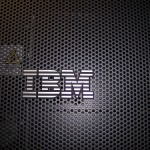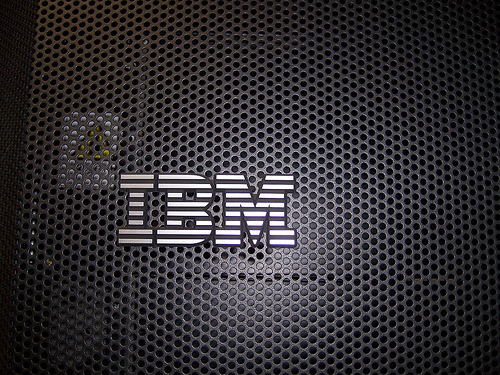
I bought a few more IBM shares on Wednesday.
At a time when new companies that earnestly tout their “cloud” credentials are floating with little more than hot air, IBM are already waiting on the battlefield armed with their trusty inventory of new patents, which are still being collected by them at a faster rate than by any of their competitors. It strikes me as odd that, although analysts seem to be so excited about big data and the infinite insights it can provide, one of the biggest data analytic providers of them all seems to be so unfashionable.
Anyway, with all of this talk of clouds and hot air, I thought that I would put my own head up there, and try to estimate what IBM might return in the years to come. This type of exercise has to be taken with a large pinch of salt, but let’s indulge.
If we take the last year’s reported earnings per share $14.94 and divide that by the current share price $189.83, then we get a current earnings yield of 7.9%. At more than double the return on offer from the current 30-year Treasury bond (3.53%) IBM’s 7.9% earnings yield is a promising starting position. The question is, will IBM be able to grow its earnings from this base? It is growing earnings that will give the company ammunition to reinvest for its future, pay for share buybacks, as well as drive the share price and dividend payments, upwards.
For an estimate of how these earnings might grow over the coming five years, we may as well consult Morningstar’s growth forecast, which suggests 8.8%. Allowing for a touch of overenthusiasm by Wall Street’s finest minds here, it would probably be sensible to trim that to 8%. So, if that 8% growth actually materialises, then what would it do to current earnings per share? Using Investopedia’s Future Value calculator we can calculate this and find that the future earnings per share would grow to $21.95.
A share price is a multiple of its earnings per share. Currently, for example, IBM’s share price is 12.9 times its earnings per share. The multiple is usually high for companies that Wall Street expects to provide rapid earnings growth, and low for companies where earnings growth is expected to be poor. If, in five years time, Wall Street expects IBM to promise future earnings growth at broadly the same rate that it expects it today, then we can expect the multiple to be the same, that is, 12.9. An earnings multiple of 12.9 for IBM is, leaving aside the period of the Financial Crisis, almost a 10-year low, and so should be a sensibly conservative multiple to use when attempting to estimate a future share price. Anyway, if Wall Street’s current Eyeore-like mood has not lifted by then, and nothing greater than the multiple of 12.9 is applied, then that would give us a share price of $283.16.
$283.16 would be a gain of $93.33 from today’s price, that is, a return of 49%. 49% implies a compound annual growth rate of 8.33% for the five-year period. However, in 2013 IBM also paid a dividend of $3.70. If we assume that it decides to stick with this dividend, rather than increase it, for the coming five years (highly unlikely, but let’s be bleak), then that would produce a total of $283.16 (share price) + $18.5 (dividends) = $301.66. That would increase the implied compound annual growth rate to 9.71%. Would that be enough, given the assumptions I have made, to justify taking the risk of purchasing a small drop of the ocean that is Big Blue?
Disclosure: Long IBM
Disclaimer: This post is not a recommendation to either buy or sell. Please consult your investment advisor.
